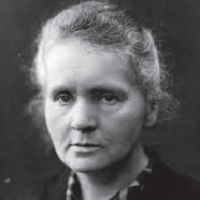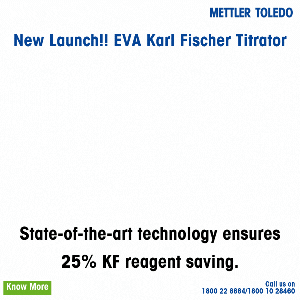Imagine having to make do with primitive lab facilities to undertake pioneering research. Imagine not being fully acknowledged for revolutionary scientific work because of the belief that women scientists could only play a supporting role when it came to significant research. Imagine being plagued by ill health and unbearable fatigue, directly resulting from the kind of research work engaged in, but carrying on regardless, with an almost maniacal devotion, not to mention severe bouts of depression and the strain of dealing with scandalous gossip and xenophobia.
Madame Curie took all this and more in her stride and in addition, produced trendsetting scientific work that took the world by storm.
An outstanding scientist of many firsts, Marie Curie was the first woman to win a Nobel Prize, the first person to win it twice (1903 in Physics, and 1911 in Chemistry), the first woman to get a Ph.D. in France, the first woman to teach at the Sorbonne, and in later years, the first Nobel Laureate whose child too went on to win a Nobel Prize, her first-born, Irene, having won it in Chemistry in 1935. Not just that, till today, she remains the only person, man or woman, to be honoured with the Nobel Prize in two different sciences. In a way, Marie Curie’s life shines a light on how excelling in scientific work was doubly difficult for women during her time, and how her determination to achieve her goals despite formidable barriers, has paved the way for other women scientists to follow in her footsteps.
Early Life in Poland
Born Maria Sklodowska in 1867 in Warsaw, in Russian-occupied Poland, Mme. Curie grew up under the shadow of tyrannies inflicted by the Russian regime. With university education being out of bounds for Polish girls under the Russian rule, in the beginning, Maria’s father, a teacher of physics and chemistry, sent her and her elder sister Bronya to a floating night university that held classes for young women clandestinely in different private residences.
However, the two sisters had set their hearts on pursuing higher studies in Paris, something their father could ill afford. Maria worked as a governess for three years to help her father pay for Bronya’s medical studies in Paris, so Bronya, after starting her practice, could then help pay for her own educational costs there.
An outstanding scientist of many firsts, Marie Curie was the first woman to win a Nobel Prize, the first person to win it twice (1903 in Physics, and 1911 in Chemistry), the first woman to get a Ph.D. in France, the first woman to teach at the Sorbonne, and in later years, the first Nobel Laureate whose child too went on to win a Nobel Prize, her first-born, Irene, having won it in Chemistry in 1935. Not just that, till today, she remains the only person, man or woman, to be honoured with the Nobel Prize in two different sciences.
University education in Paris
When Maria finally went to Paris in 1891, she was 24. She took on the French name Marie, enrolled at the Sorbonne, and notwithstanding limited resources, got her Master’s degree in physics in two years, and a year later, a second degree in mathematics. Some French scientists, impressed by Marie’s aptitude for learning and research, helped her complete the second degree by getting her a scholarship meant for an outstanding Polish student.
While studying for her Master’s in mathematics, Marie got a job from the Society for the Encouragement of National Industry for carrying out research relating magnetic properties of different steels to their chemical composition. But, she needed a lab to do the commissioned work. A Polish professor she knew introduced her to his colleague, Pierre Curie, who though holding a low-profile position as the laboratory supervisor at a municipal industrial school, was already well-known for his pioneering research on magnetism and the precise instruments he had invented for his work.
Pierre was then 34 and still living with his parents. With Marie sharing space with him in his lab, the relationship between the two of them transitioned from intellectual affinity and mutual respect to love. This development in the lives of Marie Sklodowska and Pierre Curie would dramatically change their personal lives and the course of science.
A dynamic couple obsessed with research work
Pierre, who had done enough seminal research over the past 15 years to earn him a doctorate, was stagnating at the bottom of the academic ladder. Marie motivated him to complete writing his research paper on magnetism and in March 1895, he was awarded the doctorate degree and also offered a professorship at the municipal trade school with a slightly higher salary.
In July that year, Marie and Pierre were married in a simple civil ceremony. When a family member offered to buy her a wedding dress, Marie requested that it be “practical and dark” so she could “put it on afterward to go to the laboratory”. The couple used the money they were gifted at their wedding to buy bicycles for themselves and spent the summer cycling through the countryside. In the years that followed, they continued to go on long cycle rides whenever they wanted to relax.
Ground-breaking discoveries
On completing her research on the magnetic properties of steel, though Pierre and she were barely managing to make ends meet, Marie used part of the payment she received to return the scholarship money she had received as a university student, although she was not required to. She repaid it to help some other deserving Polish student pursue advanced studies.
Choosing to work on the largely ignored Becquerel rays for her thesis, Mme. Curie, like other scientists, was baffled about the source of the high-energy radiations emitted by uranium compounds. She put forward a daring hypothesis postulating that these emissions could be a property built into the very structure of the atoms of uranium. Till then, the atom was thought to be indivisible and nobody had as yet understood the inner structure of an atom or the immense energy it contained. Mme. Curie was also sure a small sample of pitchblende she was testing could contain some undiscovered elements.
By now, hugely interested in what Marie was researching, Pierre gave up his work on crystals and joined her to expedite the new discoveries – two new elements they named ‘polonium’ (after Marie’s native country) and ‘radium’ (derived from a term Marie was to coin). The Curies published papers on the two new elements they had discovered. Marie invented the word ‘radioactive’ to describe them, and the rest, as they say, is history.
Pierre was then 34, and still living with his parents. With Marie sharing space with him in his lab, the relationship between the two of them transitioned from intellectual affinity and mutual respect to love. This development in the lives of Marie Sklodowska and Pierre Curie would dramatically change their personal lives and the course of science.
Nobel Prizes: Appreciation and Agony
Marie, with the help of Pierre, spent almost three years, arduously processing over a ton of pitchblende to isolate one decigram of radium chloride and finally presented her doctoral thesis on ‘Research on Radioactive Substances’ in June 1903. Those reviewing her thesis commented that Mme. Curie’s findings represented the greatest scientific contribution ever made in a doctoral thesis. True to character, Marie bought a black dress to wear to a small private celebration to felicitate her achievement of being the first woman to be awarded a doctorate in France, so that just like the navy-blue dress she had worn at her wedding, she could wear this one too in the lab without any stains showing.
Later that year, Marie and Pierre along with Henri Becquerel, were awarded the Nobel Prize in Physics for their revolutionary work on radioactivity. But, Marie almost didn’t get the honour. A few scientists believed only Becquerel and Pierre could have done all the hard work and had objected to Marie’s inclusion. The award citation itself avoided any specific mention of the Curies’ discovery of polonium and radium as some chemists on the nominating committee insisted that the Curies could deserve a Nobel Prize for Chemistry in the future once they isolated the new elements in more substantial amounts.
The Nobel Prize brought the Curies international recognition and improved their life somewhat. However, upholding the humanitarian ideals of science, they refused to patent their discovery of radium and cash in on the demand for it, making all their research work publicly available. Experts who visited their ‘lab’ were stunned that Mme. Curie could have accurately determined the atomic weight of radium in such dinghy conditions. In recognition of their award-winning work, the French government finally offered Pierre professorship at the Sorbonne in 1904 and promised him a new lab.
Working with radioactive substances had already begun taking its toll on Marie’s and Pierre’s health. The skin on their hands was cracked and scarred and they experienced weakness in their limbs due to the radioactive emissions corroding their bones. Today, the notebooks in which they recorded their work are kept under lock and key because of how highly radioactive they are. Those who need access to them have to do so at their own risk. In fact, due to ill health and their on-going work, the Curies could travel to Stockholm only in June 1905, thus receiving their award two years after it was announced. When Pierre delivered the acceptance lecture, he made it a point to distinguish between Marie’s independent research work and the work on which they had collaborated.
The very next year, Pierre died tragically on being run over by a fully-laden, horse-drawn wagon, and then Marie went through another bout of depression. Instead of a widow’s pension, in 1908, she accepted the offer to teach at the Sorbonne in Pierre’s place, becoming the first woman to teach there.
In 1911, just when she was selected for a second Nobel Prize, this time in Chemistry for the discovery of radium and polonium, the French press was awash with slanderous articles about her alleged affair with one of her late husband’s most brilliant students, Paul Langevin, a married man already living apart from his wife. Marie was painted as the foreign home wrecker who had destroyed a French woman’s marriage. Pressurised by some not to go to Sweden to accept the Nobel Prize because of the scandalous stories in the press, Marie went there, all the same, deciding to stand up for the integrity of her work. “I believe there is no connection between my scientific work and the facts of private life,” was her reply to one critic. In her acceptance speech, she paid a tribute to Pierre, besides also describing her independent work.
Later life
Marie was getting ready to set up the Radium Institute in Paris when World War I broke out. Appalled by the way military hospitals were operating without X-Ray equipment, sometimes chopping off limbs that could have been saved, she set up around 20 mobile X-ray stations for treating wounded soldiers on the frontlines, sometimes driving one of the cars and even operating the machines herself. In addition, she helped set up around 200 permanent X-ray centres during the war.
Established with help from philanthropists, the French government, and friends and well-wishers from the US and other parts of the world, the Radium Institute is a world centre for radium research.
Madame Curie died on 4 July 1934 of a blood disorder that had gone undetected for some time. Though she and Pierre were first buried in the Curie family plot near Paris, their remains were re-interred in 1995 in the Pantheon, France’s national mausoleum for eminent French citizens. On that occasion, the then French President, Francois Mitterrand paid a tribute to Pierre and Marie and a special one to Marie saying, “As the country bows before her ashes… I form the wish, in the name of France, that everywhere in the world the equality of the rights of women and men might progress.”
References
- Nobelprize.org. Nobel Media AB 2014: Marie Curie – Facts – https://www.nobelprize.org/nobel_prizes/chemistry/laureates/1911/marie-curie-facts.html
- Nobelprize.org. Nobel Media AB 2014: Marie and Pierre Curie and the Discovery of Polonium and Radium – https://www.nobelprize.org/nobel_prizes/themes/physics/curie/
- American Institute of Physics, Naomi Pasachoff: Marie Curie and the Science of Radioactivity – https://history.aip.org/exhibits/curie/polgirl1.htm
- Julie Des Jardins: Madame Curie’s passion – Smithsonian magazine, October 2011
- Sara Rockwell: The life and legacy of Marie Curie – Yale Journal of Biology and Medicine, 76(4-6), 2003
- The Biography.com website: Marie Curie Biography.com – https://www.biography.com/people/marie-curie-9263538
- Robert Krulwich: Don’t Come to Stockholm! Madame Curie’s Nobel Scandal – National Public Radio, 14 December 2010































